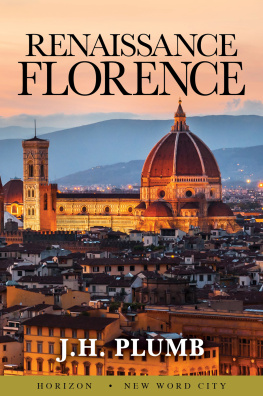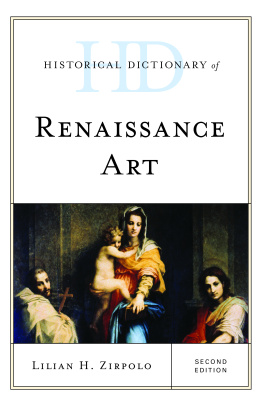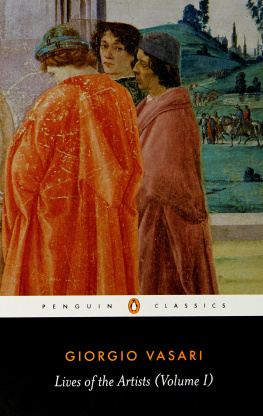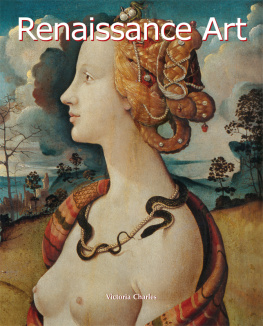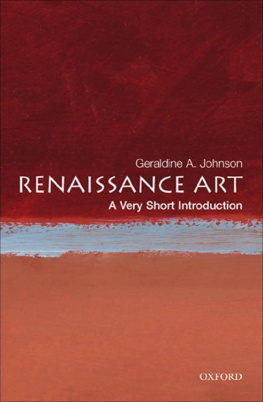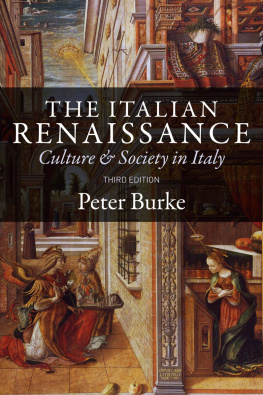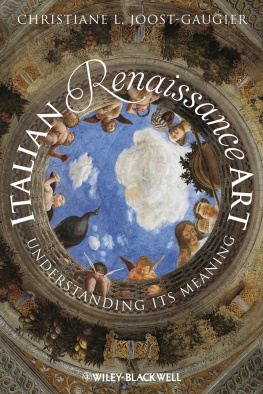The Traveling Artist in the Italian Renaissance

The Traveling Artist in the Italian Renaissance
Geography, Mobility, and Style
David Young Kim

Publication of this book is made possible by grants from the University of
Zurich and the University of Pennsylvania.
Copyright 2014 by David Young Kim.
All rights reserved.
This book may not be reproduced, in whole or in part, including illustrations, in any form (beyond that copying permitted by Sections 107 and 108 of the U.S. Copyright Law and except by reviewers for the public press), without written permission from the publishers.
yalebooks.com/art
Library of Congress Control Number: 2014930820
ISBN 978-0-300-19867-6
epub ISBN 978-0-300-21224-2
A catalogue record for this book is available from the British Library.
Jacket illustrations: (front) Detail, Lorenzo Lotto, Saint Christopher Between Saint Roch and Saint Sebastian, ca. 1535. Santuario della Santa Casa (Holy House), Loreto, Italy. Erich Lessing / Art Resource, NY; (back) Detail, Federico Zuccaro, Artists Drawing after Michelangelo in the Medici Chapel ().
In memory of my father
Phillip Kyu Hwan Kim
19361993
Is it lack of imagination that makes us come
to imagined places, not just stay at home?
Or could Pascal have been not entirely right
about just sitting quietly in ones room?
Continent, city, country, society:
the choice is never wide and never free.
And here, or there ... No. Should we have stayed at home,
wherever that may be?
Elizabeth Bishop, Questions of Travel, 1956 (excerpt)
Contents
Acknowledgments
Like traveling artists, art historians too are mobile. Like few others, our profession demands long periods of displacement and solitude to reach distant objects of study, to look and write, and look again. For encouragement over years of moving about here and there, I happily acknowledge the following colleagues, friends, and institutions. My greatest debt is to my advisor and friend Alina Payne at the Department of the History of Art and Architecture, Harvard University, who encouraged me to weave imagination and intuition with hard evidence, to construct, dismantle, and rebuild my arguments so as to see more clearly their architectonic structures and fissures. To her I give heartfelt thanks. For their insights and advice, I would like to thank Ann Blair, Tom Cummins, Deanna Dalrymple, Julian Gardner, Jeffrey Hamburger, Ewa Lajer-Burchart, Glru Necipolu, Jennifer Roberts, David Roxburgh, Victor Stoichita, Hugo van der Velden, Irene Winter, and Henri Zerner. I had the opportunity to immerse myself in art literature as a Graduate Fellow in Renaissance Studies in the idyllic surroundings of Villa I Tatti, and I am grateful to Joseph Connors, then director of the Harvard University Center for Italian Renaissance Studies, and to my fellow appointees and academic staff, among them Nicholas Eckstein, Morten Steen Hansen, Wendy Heller, Valerio Pacini, Michael Rocke, Maude Vanhaelen, and most of all, Estelle Lingo. The impulse to explore traveling artists in the Italian peninsula is due to my first teacher, Nicola Courtright, and the issue of Lorenzo Lotto as a problem artist emerged from conversations at the Isabella Stewart Gardner Museum with Alan Chong. The work of Philip Sohm has long provided an example of how to delve into the relations between word and image, and I thank him for his intellectual generosity.
At the Kunsthistorisches Institut of the University of Zurich I found a second home. For this I am deeply grateful to my mentor and friend Tristan Weddigen for engaging me as his wissenschaftlicher Assistent and providing me with innumerable opportunities to participate in the vibrant intellectual German-speaking world of art history. Wolfgang Brckle, Julia Gelshorn, Mateusz Kapustka, Stefan Neuner, Julia Orell, and Martino Stierli discussed various aspects of this project, and this book is in many ways a token and souvenir of our time in Switzerland and elsewhere. I was able to present sections of this book to students and faculty at the Universidade Federal de So Paulo, and I acknowledge Cssio da Silva Fernandes, Angela Brando, Andr Luiz Tavares Pereira, and most of all, Jens Baumgarten, who organized my stay in Brazil as a visiting faculty member as part of the Getty Foundations Connecting Art Histories initiative.
This book would not have been possible to write without a fellowship at the Kunsthistorisches InstitutMax Planck Institute in Florence. I am deeply grateful to the directors of the KHI, Alessandro Nova and especially Gerhard Wolf, for giving me the chance to wrestle with a manuscript over an entire year and for setting an example of how a scholar might invigorate early modern studies by asking cross-cultural questions in a historically responsible manner. At the KHI, I benefitted from interactions with Hannah Baader, Giovanni Fara, Corinna Gallori, Jana Graul, Galia Halpern, Ashley Jones, Fernando Loffredo, Emmanuele Lugli, and Susanne Pollock. Nicola Suthor discussed the project with me at its earliest stages and has been a steadfast friend and interlocutor. Stuart Lingo has been a stimulating partner in discussions and I have benefited from his deep knowledge and visual acuity.
I would also like to acknowledge the comments on the scope and aims of this project offered by my colleagues in the hallmark Colloquium series in the Department of History of Art at the University of Pennsylvania, among them Karen Beckman, David Brownlee, Julie Davis, Andr Dombrowski, Renata Holod, Ann Kuttner, Michael Leja, Robert Ousterhout, Holly Pittman, Gwendolyn DuBois Shaw, Larry Silver, and Kaja Silverman.
For conversations and accommodation on both sides of the Atlantic, I am grateful to Edgar Ortega Barrales, Michael Becker, Chanchal Dadlani, Dina Deitsch, Peter Karol, Kaori Kitao, Penny Sinanoglu, and Mia You. Special thanks to Maria Loh and Edward Wouk for their patient reading and meticulous commentary. At Yale University Press I would like to thank Michelle Komie for her initial interest in this project and Heidi Downey, Katherine Boller, Mary Mayer, and Amy Canonico for their oversight of this project and commitment to art historical scholarship. Noreen OConnor-Abel read the manuscript with care and a sharp eye. I would like to thank my family, Won Soon Kim, Sue Ann Kim and Adrian Lewis, and Chang-Kun Lee. Finally, Ivan Drpi has been an unflagging supporter whose rigor and clarity of thought have inspired every page of this book.
Introduction
I.
My topic is the mobility of artists, chiefly in early modern Italy. Simply put, I understand mobility as a cultural practice that comprises an artists displacement, either voluntary or unwilling, from a homeland; confrontation with and work within an alien environment; and finally, the reception of that mobility by both foreign counterparts and compatriots. Mobility provoked commentary, censure, praise, reflection, and ultimately debate by sixteenth-century writers on art and by artists themselves. At stake in these confrontations was that significant index of subjectivity, that personal quality which could secure fame or precipitate oblivionan artists style. And these disputes have implications for our understanding of a historically contingent conception of artists, geography, and works of art, how they were imagined to coexist, how they functioned.
Next page

